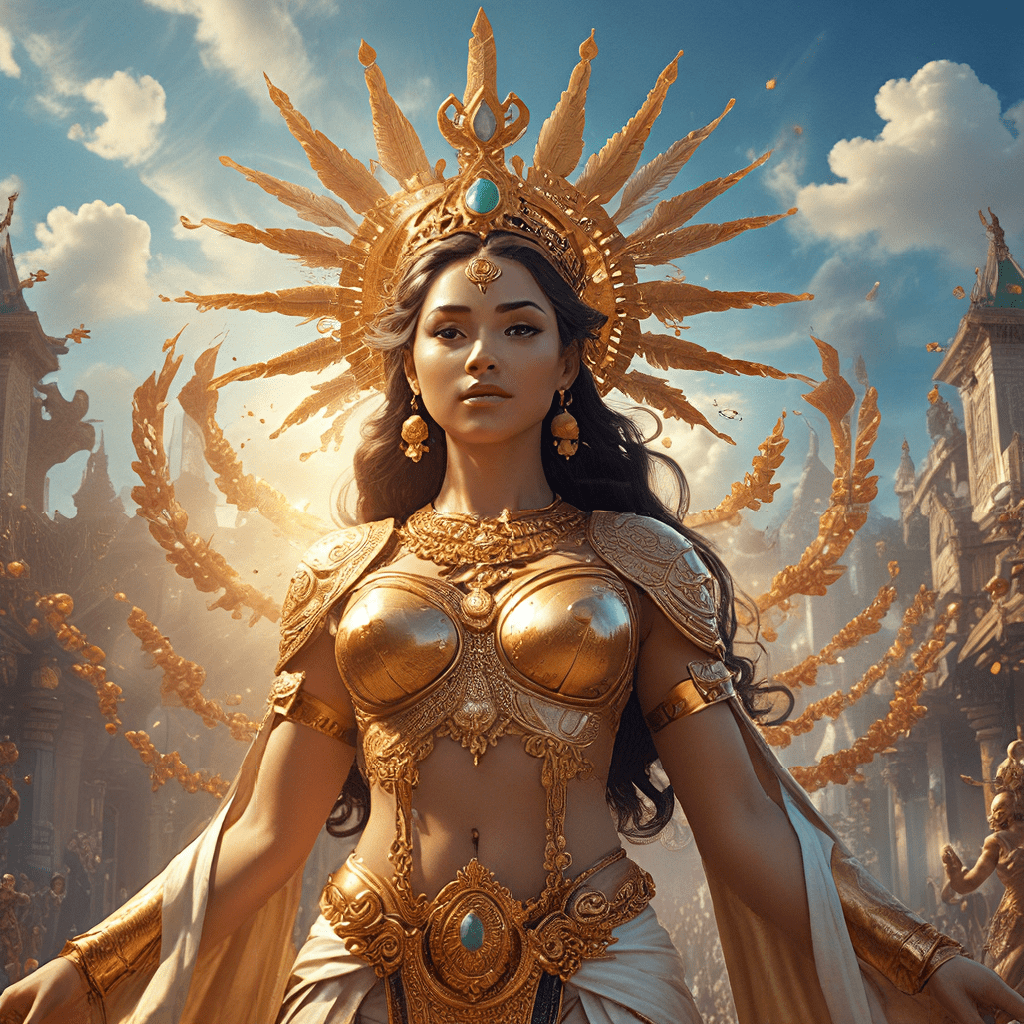The Sky Goddess Nut: An Introduction
In the ancient Egyptian pantheon, Nut, the sky goddess, played a prominent role. She was a powerful and nurturing deity who embodied the vast expanse of the heavens. Nut was revered for her ability to give birth to the stars and planets, and her daily journey across the sky was seen as a symbol of life and renewal. The Egyptians celebrated her with a grand festival known as the Festival of Nut, a time of joy and offerings to the goddess.
Nut’s Cosmic Role: Embracing the Heavens
Nut’s cosmic role was central to ancient Egyptian beliefs. She was seen as the mother of the stars, planets, and the sun god Ra. The Egyptians believed that Nut stretched her body across the sky each night, her limbs forming the constellations that guided sailors and farmers. Her belly, adorned with stars, reflected the celestial expanse. The Egyptians saw her as a protective figure who shielded the earth from harm and ensured the continued cycle of life and death.
The Birth of Nut: A Cosmic Tale
The birth of Nut is recounted in ancient Egyptian mythology as a captivating story that reflects the cosmic order. The god Geb, representing the earth, was said to be in love with Nut. However, their union was forbidden by the god Atum, the creator god. Atum feared that their children would overthrow him. To prevent this, Atum decreed that Nut could never give birth on earth. With the help of the god Thoth, the god of wisdom and magic, Nut was able to conceive and give birth in the sky. This tale symbolizes the delicate balance between cosmic forces and the triumph of love and creation over limitations.
The Festival of Nut: A Time of Celebration
The Festival of Nut was a time of great celebration and religious devotion in ancient Egypt. It was held during the month of Khoiak, the fourth month of the Egyptian calendar, which corresponds to October/November. The festival was a joyous occasion filled with processions, music, dancing, and offerings to the goddess. Egyptians adorned their temples with colorful decorations and celebrated the nourishing power of Nut. The festival was a time of unity and community, bringing people together to honor their beloved sky goddess.
The Rituals of the Festival: Honoring the Goddess
During the Festival of Nut, the Egyptians performed various rituals to honor her. Priests and priestesses carried the sacred barque of Nut, a symbolic representation of the goddess, through the streets. They sang hymns and chanted prayers, praising her for her nurturing and protective qualities. Offerings of food, wine, and flowers were presented to her, symbolizing their gratitude for her gifts and blessings. The rituals were a tangible expression of the Egyptians’ deep devotion to the goddess and their belief in her divine power.
The Symbolism of the Festival: Celebrating Life and Rebirth
The Festival of Nut was more than just a celebration of the sky goddess. It was also a celebration of life, rebirth, and the cyclical nature of existence. Nut’s daily journey across the sky, from dawn to dusk, symbolized the constant flow of time, the cycle of death and rebirth, and the ever-present power of creation. The festival was a reminder that life is a continuous journey, a cycle of beginnings and endings, and that Nut, as the embodiment of the sky, was the ultimate symbol of this endless cycle.
The Significance of Nut’s Festival: Importance in Egyptian Culture
The Festival of Nut held great significance in ancient Egyptian culture. It served as a reminder of the importance of the celestial realm and the powerful influence of the gods upon human life. It also reinforced the Egyptians’ belief in the interconnectedness of all things, from the heavens to the earth. The festival was a time for reflection, celebration, and renewal, a reminder of the sacred bond between humanity and the divine.
The Connection between Nut and the Sun God Ra
Nut and the sun god Ra are closely intertwined in Egyptian mythology. Ra, who traveled across the sky in his solar barque, was believed to be born from Nut each morning. His journey through the celestial realms was seen as a manifestation of Nut’s nurturing power. This connection between Nut and Ra solidified the importance of the sun god in Egyptian belief and further emphasized Nut’s role as a vital force in the cosmic order.
The Legacy of Nut and her Festival: Enduring Influence
The legacy of Nut and her festival continues to resonate today. Her image, often depicted as a goddess with a star-studded body, can be found in ancient Egyptian temples and tombs. Her story, like many of the ancient Egyptian myths, reflects profound truths about the universe and the human condition. The Festival of Nut, though no longer celebrated in its original form, serves as a reminder of the enduring power of mythology and the influence of ancient Egyptian culture on our understanding of the world.
Modern Interpretations of Nut: The Sky Goddess Today
In modern times, the image of Nut has been adopted by different cultures and belief systems. She is seen as a symbol of feminine power, the vastness of the cosmos, and the unending cycle of life and death. Some modern pagans and spiritual seekers revere Nut as a goddess who embodies the creative energy of the universe. Her story, with its themes of love, creation, and overcoming limitations, continues to inspire and resonate with people seeking meaning and connection beyond the conventional.


